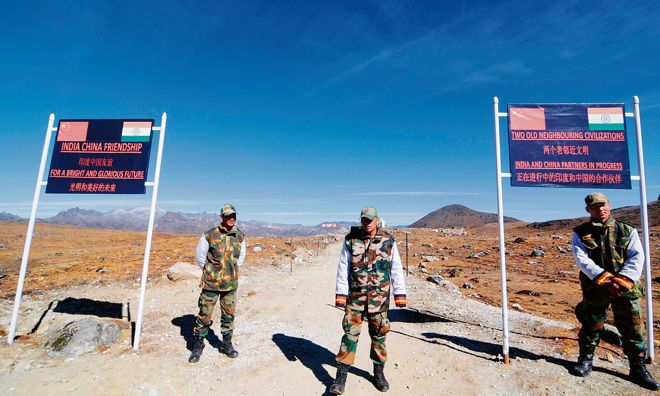EXTERNAL Affairs Minister S Jaishankar and his Chinese counterpart Wang Yi have agreed to ‘redouble efforts’ through diplomatic and military channels for an early resolution of the remaining issues along the Line of Actual Control (LAC). It is tempting to regard this declaration as a breakthrough, but the problem is that many such averments have been made in recent years amid the prolonged standoff in eastern Ladakh. The two leaders, who met on the sidelines of the Shanghai Cooperation Organisation meeting in Kazakhstan, are also apparently in agreement on the need to stabilise and rebuild bilateral relations. Yet again, peace and tranquillity are the buzzwords, but there is little inclination to go beyond the platitudes and make tangible progress on the ground.
The trust deficit is exemplified by the competitive development of border villages. India has reportedly decided to set up villages or habitations in Arunachal Pradesh ‘closer to the LAC’ in a bid to match China’s efforts. The Chinese have established over 600 ‘prosperous villages’ (Xiaokang) along the LAC to bolster their territorial claims and enhance their military readiness. India’s counter is the Vibrant Villages Programme, which was launched last year. The ambitious project aims to cover around 3,000 villages in Arunachal, Himachal Pradesh, Uttarakhand, Ladakh and Sikkim. The focus on improving road and telecom connectivity, housing and tourism facilities has a larger objective — to encourage more and more villagers to become the eyes and ears of the soldiers in border areas.
Amid this all-out infrastructural push and troop buildup, the periodic talks at the diplomatic and military levels have often been inconclusive. A summit-level interaction between Prime Minister Narendra Modi and President Xi Jinping has remained elusive. As Asia’s largest powers, it is in the interests of both countries to engage in dialogue and address the thorny issues, including China’s unwillingness to exchange maps of the LAC.









